A Comprehensive Guide to Teaching Kids to Hand Sew and the Essential Supplies You Need
Recently, Alicia, who is a member of the Sew a Softie facebook group asked me about teaching kids to hand sew and what supplies you might need to get started.
I’ve been teaching kids to hand sew for almost 30 years and I love that hand sewing requires only a minimal amount of supplies and that the supplies needed are actually not that expensive. Hand sewing is portable, you can take it wherever you go and even young children can learn to hand sew. Once parents realise that little kids can use sharp needles quite responsibly and accept that kids stitches don’t have to be perfect or even, the fun in learning to sew can begin.
So you might be wondering… What is a good age to teach child to sew? or Why is hand sewing so great for kids? As you can see I’ve answered both questions.
The following is a list of the sewing supplies I use in my workshops. These are my personal sewing supply preferences and are based on my own experiences spread over more than 25 years of teaching kids to sew but they are still just personal preferences. Other sewing teachers may have different supply lists that will work for you just as well.
Once you have your supplies you might want to look over my Guide to Teaching Kids: Essential Stitches List
An important thing to remember when buying your sewing supplies is to buy good quality materials. Cheap materials tend to break easily and oftentimes are difficult to work with. Those threads and needles you buy at bargain basement stores are often bargain basement quality too. ALWAYS check the quality of your materials by giving them a test run. If it’s difficult for you to pull the needle through the fabric it’s going to be even more difficult for a child.
The essential supply list when teaching kids to hand sew:
Some links below are affiliate links which means I might earn a commission, at no extra cost to you if you click through and make a purchase.
needle threader (optional)
thread
2B pencil or wax pencil
decorations
Sewing box for your supplies: This isn’t essential but having your own sewing box when you’re learning to sew does making sewing just a little more special. And this easy to sew needle book tutorial is a good addition to your sewing kit.
Needles
First up, I want to debunk the myth that kids need big blunt needles to sew with. Big blunt needles can be great for projects like this one at Childhood101 but in general, if you want to make sewing enjoyable and easy and doable for kids they need small sharp needles.
I like using Chenille 24 needles which work well when I’m using ordinary sewing thread. If I’m using a thicker thread like a perle cotton or embroidery floss I’ll use a size 20 or 22 chenille needle. Experiment and see what works best for you and your kids.
Chenille needles are small and sharp but also have a very large eye which makes it easier for kids to thread. Having said that, basically any sewing needle will really do but the smaller the eye the harder it will be for kids, and for you, to thread. Remember with needles the higher the number the smaller the needle.
Remember the size of your needle will depend on the thread you’re using. A thicker thread will need a needle with a larger eye.
Needle threader
I don’t actually use needle threaders in my workshops. Instead I prefer to get the kids to try and thread their own needles or I help them with the threading. However, I don’t think that there’s any reason to avoid using a needle threader and some teachers find them very useful aids…especially if you’re teaching a large group of kids! I know Amie Plumley at Sewing School uses the LoRan threaders in her workshops. Just make sure the hook on the threader you choose can easily go through the eye of the needle you’re using.
You might like this video on easy ways to thread a needle with kids
Pins & Clips
Pins are used to hold two or more pieces of fabric in place so that they don’t shift or move while you sew them together. When pinning fabrics together try to keep the pins away from your sewing line to avoid getting pricked.There are lots of pretty varieties to choose from but I like to use berry pins in my workshops. If you’re making a sewing kit as a gift you might instead want to add some pins with hearts or butterflies on the end.
Alternatively, you can use sewing clips to hold pieces of fabric together. Clips are widely available in craft stores and have no sharp points.
Thread
Here again I want to stress the need to use good quality materials. And good quality doesn’t mean expensive. Just beware of those packs of cheap thread. They tend to break very easily and there’s nothing more frustrating than sewing a project only to find your thread keeps breaking. I’m lucky that Aurifil are sponsors of Sew a Softie and send me their thread to use in my workshops. I use their mako 28 cotton thread as well as their Mako 12, which is a slightly thicker thread, but any good quality thread is what you should be looking for.
I use ordinary cotton sewing thread in my workshops, I like to get the kids to push the thread through the eye of the needle, bring the two ends together and tie them in a knot. This ensures that the thread doesn’t keep slipping off the needle.
Another good brand of sewing thread is Gütermann
You can just as readily use embroidery floss, crochet cotton, perle cotton or wool which are thicker threads. If you use these thicker threads you’ll need a needle with a larger eye such as a chenille 20 and you won’t double the thread over.
Fabric
I use felt for many of my projects. It’s easy to use, doesn’t fray and comes in an amazing array of colours. The first thing you should know about felt is that there are different types of felt. The three main types you’ll find are (1) pure wool felts (2) wool blend felts and (3) acrylic felts. Pure wool felt is a beautiful fabric but way too expensive to use in workshops. Acrylic felts are by far the most popular felt used for kids. It’s inexpensive but the quality between brands can differ noticeably. They can be very hard to sew and sometimes they can be very scratchy to the touch making sewing not a really pleasant experience, especially for kids. But some acrylic felts are soft and are easy for kids to use and sew with.
In my workshops I use wool blend felts because they’re reasonably priced and are soft and easy to work with. As always if you’re not sure if the felt is good, try it out, make a project with it and see how it feels to sew with.
I also use cotton fabrics for some of my projects. I especially love the feel of 100% cotton but the cotton blends or poly cottons can be just as good to use.
Stuffing
There are lots of different stuffing options available. I tend to use the polyester fibrefill because it’s inexpensive and easy to get. But the options are endless. You might find this article on the best stuffing for soft toys useful.
Scissors
You’ll need a good quality pair of scissors that you use just for cutting fabric and a cheaper pair for cutting paper. Don’t let the kids use the fabric scissors for cutting paper because paper will blunt the blades. In my sewing workshops I love using Kai or Fiskars scissors. They’re fabulous scissors to use.
I recently interviewed Alisa Kutsel in my Youtube series Tips from Teachers Sewing with Kids. One of Alisa’a favourite sewing supplies was the electric scissors she bought for cutting fabric.
2B or Wax Pencil
A soft 2b or 3b pencil is great for drawing on felt and makes it easy for you to cut out shapes or draw a line for kids to sew on. For dark cotton fabrics and dark felts I use a white chinagraph or wax pencil. It’s been a life saver for me. The only brand I’ve ever used is Staedtler so I’m not sure how other brands work but being able to draw on dark felts and easily see the lines for cutting or sewing is wonderful.
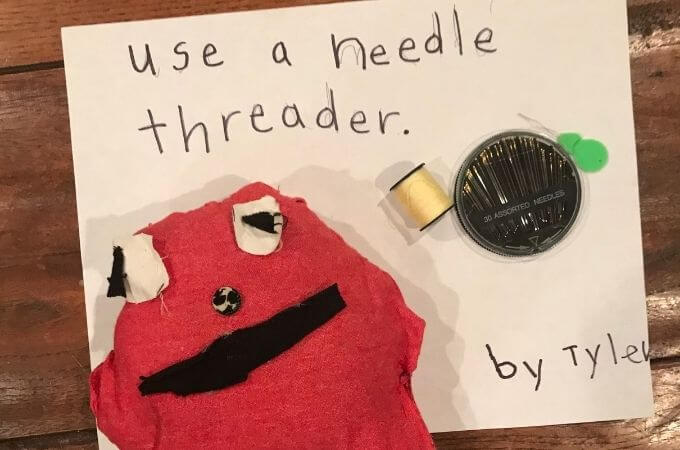 Glue
Glue
Not all glues are created equal. And just because a glue is a fabric glue doesn’t necessarily mean it will stick your felt together. You really need to test your glue first to make sure it sticks your felt together!
I use Bostik Glu sticks in my workshops on wool blend felt and they work amazingly well, but I think those glue sticks are only available in Australia. Although they don’t really work to stick my 100% wool felt.
Thick tacky glues usually work well on felt. Aleenes is a good tacky glue and here in Australia I also use Helmar Tiger Grip glue.
Another easy options if you don’t want to use glue to stick on features is to use self adhesive felt.
Decorations
What can I say, kids love to decorate their finished projects. Of course, I could say to ‘over-decorate’ but it is their project and it’s fun to see how excited they are to add the finishing touches. Here I actually go to our local $2 shop which has a great craft section with ribbons, bows, buttons and a variety of fun decorating supplies. When it comes to decorations, the ‘quality rule’ can be bent a bit. The fun is finding them, either in the shops or rummaging through all sorts of options you’ve collected from everywhere and anywhere over the years. The person making the project is the only one who really knows if the decoration is good or not.
Kids Sewing Kits
Making a sewing kit for your child would be a fun birthday or Christmas gift. There are lots of sewing baskets available. Some filled with sewing supplies and others ready for you to fill yourself. And there are lots of kids sewing kits available as well.
If you’re not quite ready to tackle sewing with your kids then a sewing kit with all the supplies and instructions is a great way to start your sewing adventure!!
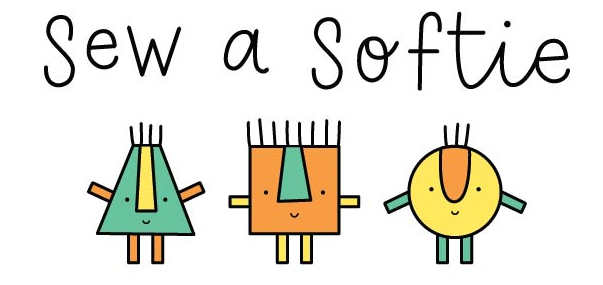
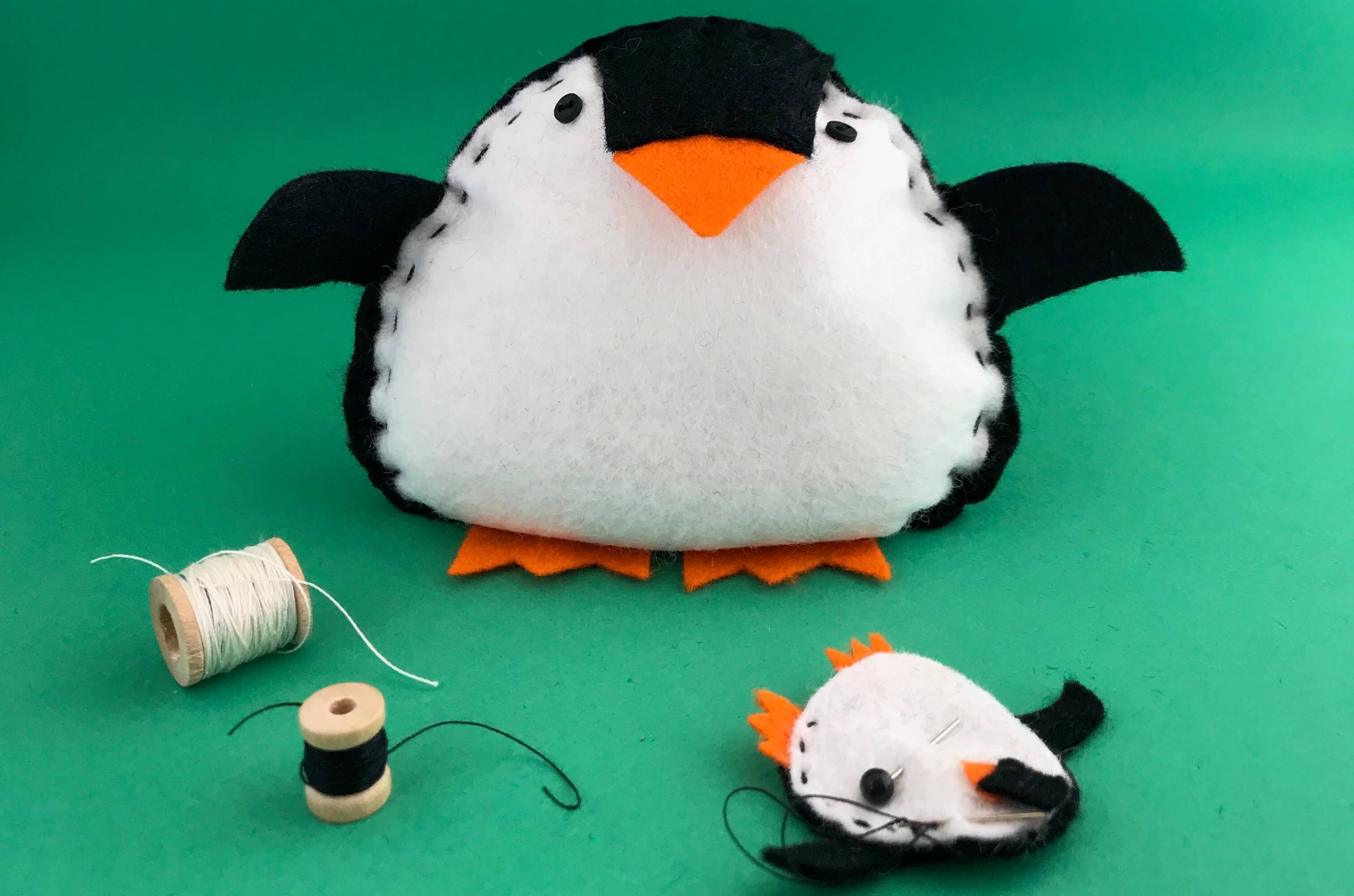
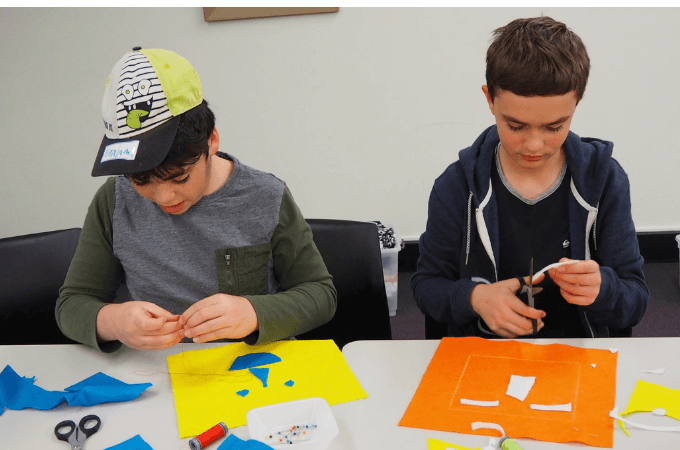
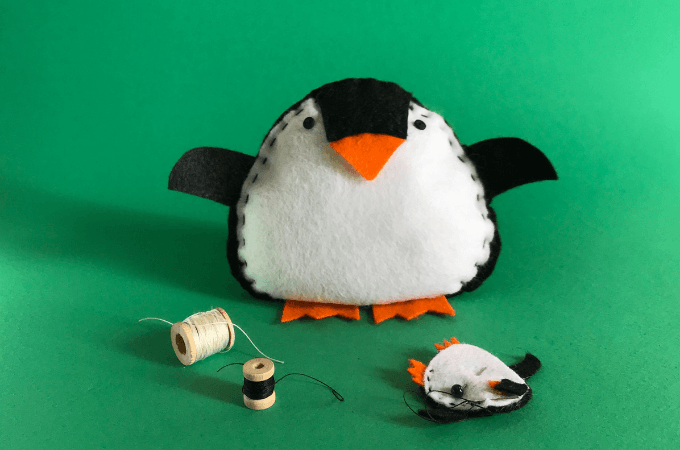
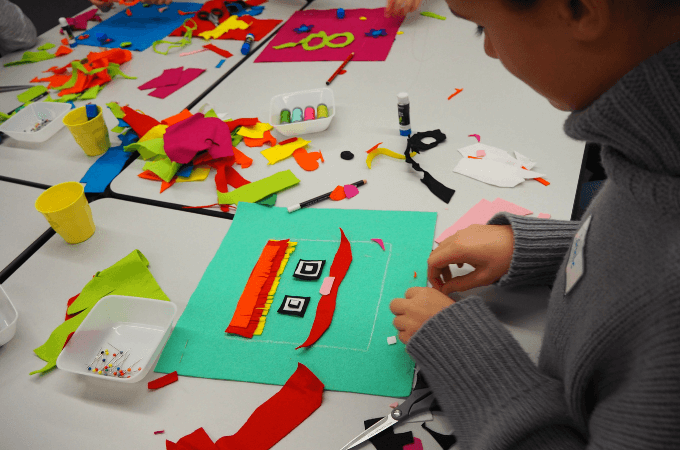
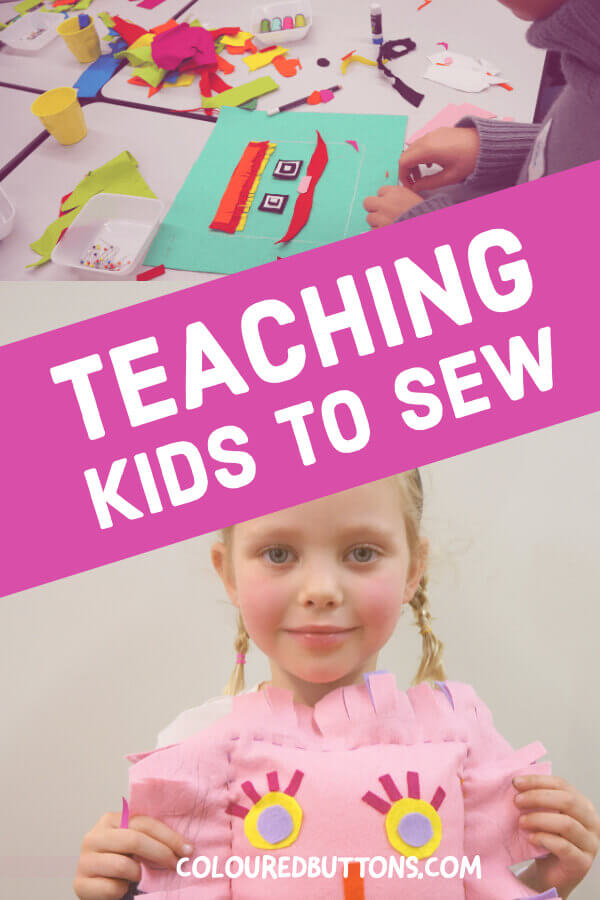
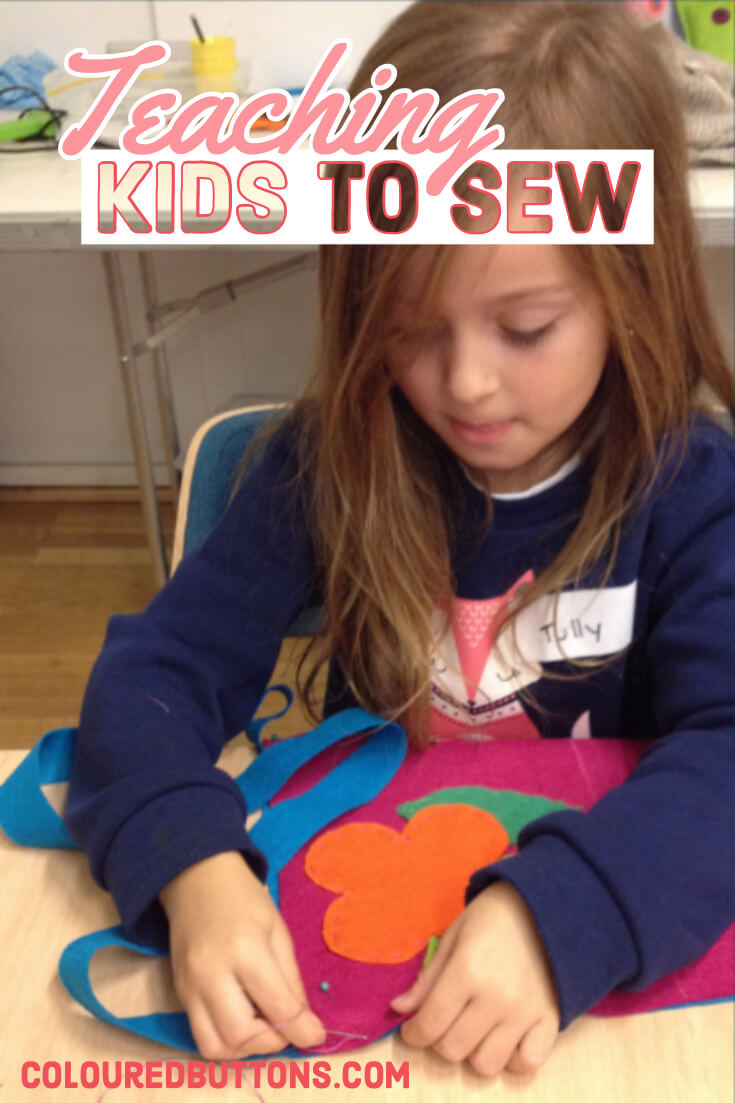
Fantastic guide!
Hi Trixi,
I’m wondering if you have any tutorials for showing kids how to tie a finishing knot on the back of their fabric?
Hi Monica, I have one on youtube: https://www.youtube.com/watch?v=P_aL1iMJKyw&t=46s but I’m going to make another one with different ways of tieing of a thread! Thanks for the great question 🙂
I would love to make a soft toy. I haven’t seen before. I’ve say beside a teacher watching her sew. Any advice? Also for embroiding eyes on toys. First time sewing. Toy is for a 1st birthday gift.
Choose any of the projects on the blog to make. They are all really easy to hand sew!